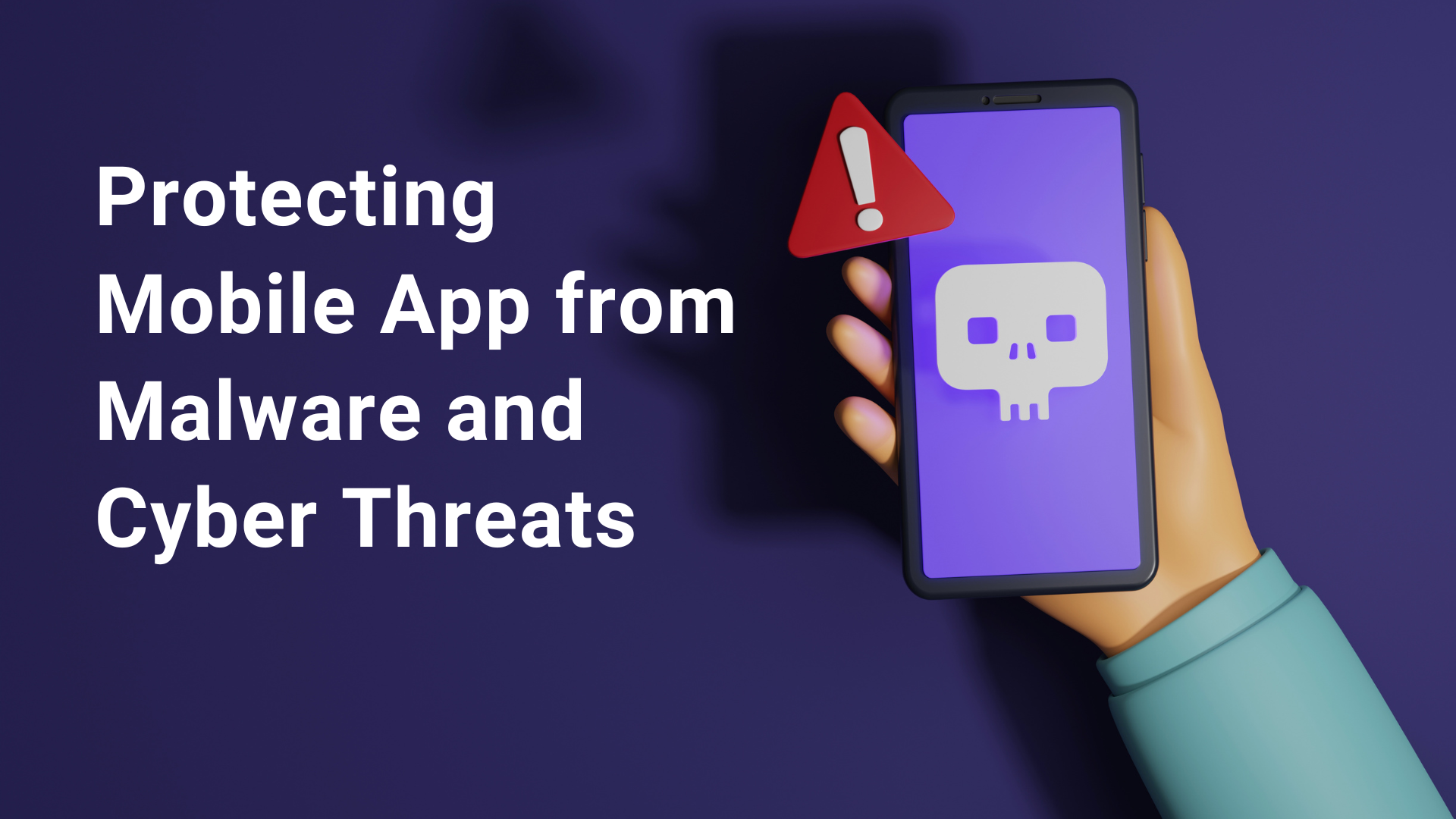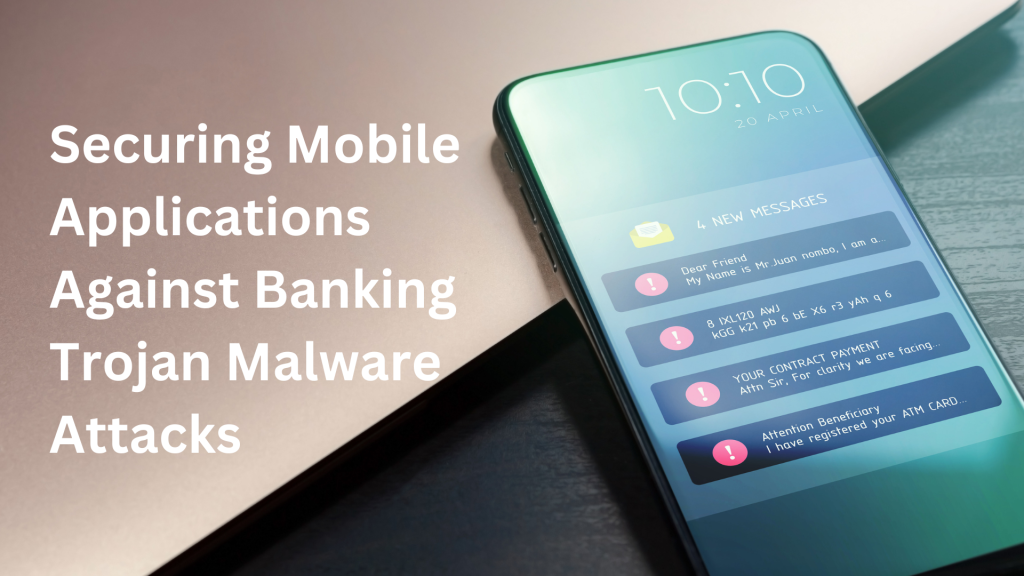
Protecting Mobile App from Malware and Cyber Threats
In today’s digital landscape, mobile applications have become an integral part of our lives. From social media platforms to banking, shopping to healthcare and entertainment, we rely on mobile apps for various purposes, convenience and access. However, with the increasing dependence on mobile apps, this also exposes us to a significant risk: cyberattacks. Cyber criminals are constantly devising new ways to exploit vulnerabilities in mobile apps. Thus, the need for securing these digital gateways becomes more important for both businesses and users. This is where mobile app security, via mobile app shielding or hardening, frequent checking of the app health report and continuous monitoring solutions play a crucial role in protecting these apps from potential threats – preventing and safeguarding data, reputation and user trust being exploited.
Securing Your Mobile App
While mobile app security is the practice of implementing measures to protect mobile applications from unauthorized access and malicious activities. It encompasses various aspects, including secure coding practices, encryption techniques, authentication mechanisms, and vulnerability assessments. By prioritizing mobile app security, developers can safeguard user data and prevent privacy breaches.
- Authentication Mechanisms for User Verification
Authentication mechanisms are essential in ensuring that only authorized users can access the mobile app. Commonly used authentication methods include:
– Username and Password: The traditional username and password combination is widely used but can be vulnerable to attacks like brute force or credential stuffing. It is recommended to enforce strong password policies and implement mechanisms like account lockouts to mitigate such risks.
– Biometric Authentication: Leveraging biometric data, such as fingerprints or facial recognition, adds an extra layer of security by validating the user’s unique characteristics. - Mobile App Hardening: Protecting App Code and Logic
Mobile app hardening strengthens mobile app security by employing obfuscation techniques to protect the app’s code and logic from reverse engineering and tampering. This includes hardening the authentication mechanism itself. By obfuscating the code and logic behind the authentication process, it becomes significantly more difficult for attackers to analyze, understand, and potentially bypass these critical security measures, ultimately preventing unauthorized access to the app’s source code, sensitive APIs, and critical intellectual property. - Anti-Tampering Measures
Mobile app hardening also includes anti-tampering measures to detect and prevent unauthorized modifications to the app’s code or data. These measures ensure the integrity of the app and protect it against manipulation. Some common anti-tampering techniques are:
– Checksum Verification: By calculating and verifying checksums of critical files or data, it enables the app to not execute when the integrity of the application is breached.
– Root / Jailbreak Detection: Rooting or jailbreaking a device can expose the app to potential security risks. Implementing root/jailbreak detection mechanisms helps identify compromised devices and take appropriate actions. - Mobile App Hardening Solutions: Strengthening App Defenses
Mobile app hardening solutions focus on strengthening the app’s defenses against potential attacks. These solutions often include additional layers of protection and advanced security features. - Runtime Application Self-Protection (RASP)
Runtime Application Self-Protection (RASP) is a proactive security measure that monitors the app’s runtime behavior and takes action against suspicious activities. RASP solutions can detect and prevent attacks in real-time, protecting the app and its users. Some features of RASP include:
– Behavior Monitoring: RASP solutions analyze the app’s behavior to identify anomalies and potential security threats.
– Attack Mitigation: When a potential attack is detected, RASP can take preventive actions, such as preventing the app from continuing to run or displaying a pop-up notification message that warns users about suspicious behavior or actions. - Code Integrity Checks
Code integrity checks ensure that the app’s code remains intact and unmodified. These checks can help detect any tampering attempts or unauthorized modifications. Some techniques used for code integrity checks include:
– Signature Verification: To ensure the authenticity and integrity of the app’s code, we implement code signing. This involves digitally signing the app’s code with a trusted certificate. During runtime, the app’s signature is verified against the original, and if the verification fails, the app will be prevented from running.
How to Secure Your Mobile App with Actionable Insights
While securing mobile applications is crucial for business and organizations seeking to protect sensitive data and maintain customer trust, business and organizations should also implement with actionable insights. The journey to mobile app security begins with a comprehensive understanding of potential threats and vulnerabilities. By conducting thorough risk assessments and leveraging advanced security measures, business and organizations can fortify their mobile apps against evolving cyber threats, ensuring robust protection for both users and proprietary information.
Furthermore, proactive monitoring and continuous evaluation are essential components of an effective mobile app security strategy. Implementing real-time analytics and detection tools enables business and organizations to swiftly identify and mitigate potential security breaches, pre-empting potential damage to their reputation and financial stability. By prioritizing mobile app security and embracing a proactive approach to threat management, business and organizations can instill confidence in their users while safeguarding their digital assets against an increasingly sophisticated threat landscape.
Conclusion
Mobile app security, mobile app shielding, and mobile app hardening solutions are crucial aspects of protecting mobile applications from threats and vulnerabilities. By implementing secure coding practices, encryption techniques, authentication mechanisms, mobile app shielding techniques, and mobile app hardening solutions, developers can safeguard user data and ensure the integrity and security of mobile apps. It is essential to prioritize mobile app security throughout the development process and stay updated with the latest security practices to mitigate risks and protect users’ privacy.
How can SecIron Help?
At SecIron, we understand the critical importance of mobile app security in today’s ever-changing threat landscape. Our comprehensive suite of mobile app security solutions is designed to safeguard your applications from a wide range of cyberattacks, including malware, data breaches, and unauthorized access.
Our Mobile App Security Solutions:
- Mobile Application Security Assessments: Identify and address vulnerabilities in your mobile apps before they can be exploited by attackers.
- Mobile App Hardening: Strengthen your app’s defenses against malware and other threats.
- Mobile App Monitoring: Gain real-time insights into your app’s security posture and identify suspicious activity.
Protect what matters most with SecIron’s mobile app security solutions.
Ready to launch a secure app?
From deployment to security and beyond, SecIron helps you take you from visibility to action.
FAQs (Frequently Asked Questions)
Why is mobile app security important?
Mobile app security goes beyond just protecting user data and privacy; it safeguards the entire mobile ecosystem. This includes robust authentication mechanisms (password protection, facial recognition) to prevent unauthorized access, measures to prevent one-time password (OTP) exposure, and malware detection and containment to prevent threats, protecting server-side APIs accessed by the app, guarding against app analysis used for malicious purposes, and mitigating threats like Man-in-the-Middle (MITM) attacks, phishing screens, communication hijacking, and screen hijacking.
With the increasing number of mobile app users, the risk of cyber-attacks and data breaches has also grown. Implementing robust security measures ensures that user information remains confidential and the app is resistant to potential threats.
How can I improve the security of my mobile app?
To enhance the security of your mobile app, consider implementing secure coding practices, encrypting sensitive data, and using strong authentication mechanisms. Additionally, mobile app hardening and threat monitoring solutions can add extra layers of protection against reverse engineering and attacks.
What are the risks of not prioritizing mobile app security?
Neglecting mobile app security can lead to various risks, including unauthorized access to user data, data breaches, financial loss, damage to the app’s reputation, and legal implications. These risks can also manifest in the form of bypassed authentication mechanisms (like facial recognition), exposure of server APIs, compromised verification and communication channels with the backend server, potential backend database breaches, and increased vulnerability to malware. It is crucial to prioritize security to mitigate these risks.
Can mobile app hardening prevent reverse engineering completely?
While mobile app hardening techniques can make reverse engineering more challenging, it is not possible to prevent it entirely. However, by implementing obfuscation techniques, code encryption, anti-tampering measures, code integrity checks and other proprietary technologies such as VMP, you can significantly deter and slow down potential attackers.
Are mobile app hardening solutions only for high-risk applications?
Mobile app hardening solutions are beneficial for all types of applications, regardless of their risk level. By strengthening the app’s defenses and implementing runtime protection mechanisms, you can proactively mitigate potential security threats.
How often should I update my mobile app security measures?
Mobile app security is an ongoing process, and it is recommended to regularly update your security measures. Stay updated with the latest security practices, implement patches and updates, and conduct periodic vulnerability assessments to ensure your app remains secure.
Related post

Discover the state of malware landscape in Southeast Asia (SEA) and how to protect your mobile applications from malware threats.

Learn to protect your mobile applications from banking trojan malware attacks with the latest security solutions.
Ready to launch a secure app?
WE CAN HELP!

Ananya
Making Your Security
Project A Success!
By filling out this form, you opt-in to receive emails from us.
Categories
- Blog (26)
- Latest News (4)
- Success Stories (4)
- Whitepapers & Guides (3)
Recent Posts

Mobile App Security Trends and Strategic Solutions in 2025
November 18, 2024
Protecting Mobile Apps with Strong Threat Detection Solution
November 7, 2024Recent Comments
Tags
There’s no content to show here yet.
Recent Posts
- Top Mobile App Security Threats and How to Mitigate Risks in Mobile Banking
- Mobile App Security Trends and Strategic Solutions in 2025
- Protecting Mobile Apps with Strong Threat Detection Solution
- Protecting Mobile App from Threats with Application Hardening
- Enhancing Mobile Banking Security to Combat the Rising Threat of Malware in Malaysia

